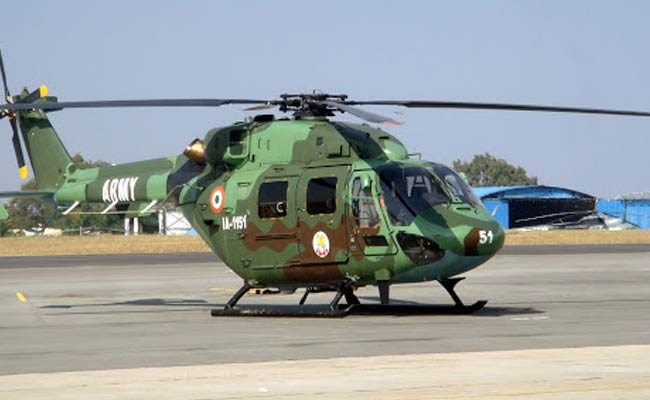IAF Dhruv helicopters fitted with Upgraded Control System
Two senior officials with knowledge of the matter said that an advanced light helicopter (ALH) design flaw in the military's Dhruv has been resolved, and the locally built helicopters are getting an upgraded control system to improve airworthiness after a string of mishaps forced the fleet to be grounded and raised concerns about their history of safe flight.

The design assessment was mandated in April by a high-ranking government regulatory agency that certifies military aircraft's airworthiness.
Hindustan Aeronautics Limited (HAL), a manufacturer of aircraft, has started providing new booster control rods made of steel rather than aluminum to ALH squadrons around the nation. According to S Anbuvelan, CEO of HAL helicopter complex, this "tested and proven" design enhancement would ensure flight safety.
These rods provide pilots control over how the helicopter moves, and their failure can seriously impair the power supplied to the rotor blades, leading to mishaps.
"Control rods for one hundred and twenty helicopters have been sent to various squadrons.These rods will be delivered to the remaining helicopters by November. Control rod failure-related incidents won't happen again, according to Anbuvelan. Given that the armed services use over 330 twin-engine ALHs that HAL designed and produced, the design enhancement is crucial.These helicopters were first delivered by it in the early 2000s.
The collective, pitch, and roll control rods in the ALH control assembly are the first to be upgraded.The collective control rod is being changed at this time.In a similar manner, the remaining two rods will be changed between November 2023 and June 2024, he stated.
Following three mishaps in less than two months earlier this year, the ALH fleet was grounded for weeks.Over the last five years, the multi-mission helicopter has been involved in twelve accidents.
According to another official, the design modification was greatly required because India is aiming to tap into its export potential and the armed services utilize the ALH extensively.
To increase the airworthiness of the ALH, the Centre for Military Airworthiness and Certification (CEMILAC), located in Bangalore, ordered a design assessment of the booster control rods.Following an expert committee formed in the wake of a navy ALH ditching (emergency landing in water) into the Arabian Sea on March 8, CEMILAC, which operates under the Defence Research and Development Organization, determined that the design review was required. The committee looked into potential failures that could have contributed to the incident.
Following the navy incident, an army ALH and a coast guard were involved in incidents.
The panel concluded that a technical error in the installation of the serrated washers in the booster control rods was the most likely cause of the naval ALH disaster.
In a letter dated April 23, CEMILAC instructed HAL, the three services, and the coast guard to expedite the design, development, and qualification of steel booster control rods that are tolerant of assembly errors and to aim for implementation of the new design within six months to a year.
In the letter, CEMILAC director of helicopters and missiles DM Isack stated that "even though the helicopters are mature from a design point of view, having been exploited for more than 3 lakh hours, still there is scope to review the design/lifting aspects of the safety-critical system by an expert committee as a long-term measure."
The significant decrease in the control rods' fatigue life was reported to the regulatory agency.
Additionally, early this year, the Indian Air Force grounded its most recent light combat helicopters (LCH), which share many characteristics with ALH. Targeting enemy air defenses, slow-moving aircraft, high-altitude bunkers, and counter-insurgency operations are among the capabilities of LCH.
Prior to this, CEMILAC had recommended steps to resume ALH and LCH operations.
It stated that following required checks, clearance for both platforms—limited to 100 flying hours each—will be granted. The successful completion of two crucial tests by HAL will be the prerequisite for receiving further approval for up to 500 flying hours or a year, whichever comes first, it stated.
In order to check the multi-axis stresses on the control rods, two helicopters equipped with instrumented control rod assemblies were used in these tests. Additionally, fatigue testing was done on the rods with appropriately installed serrated washers to validate their original capacity.